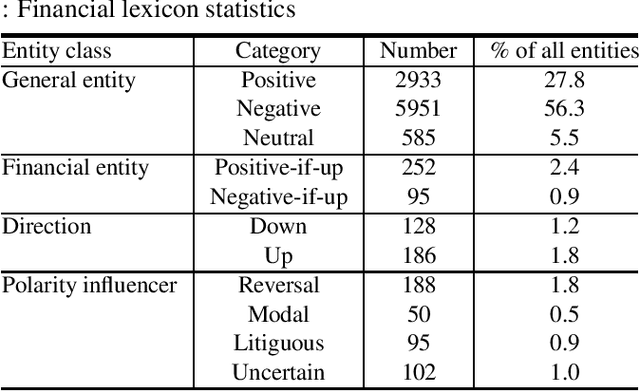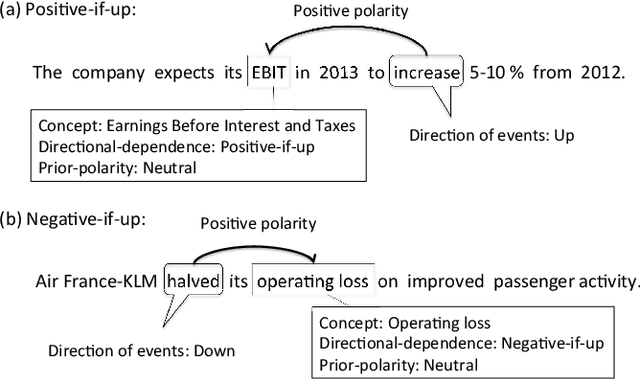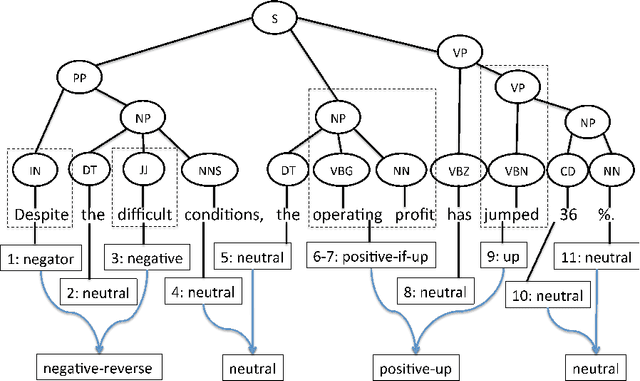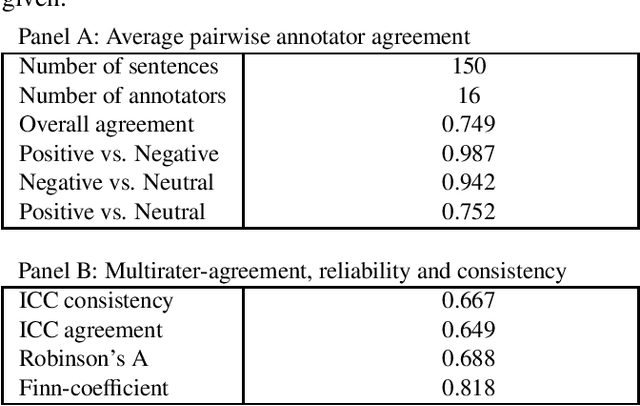Good Debt or Bad Debt: Detecting Semantic Orientations in Economic Texts
Paper and Code
Jul 23, 2013



The use of robo-readers to analyze news texts is an emerging technology trend in computational finance. In recent research, a substantial effort has been invested to develop sophisticated financial polarity-lexicons that can be used to investigate how financial sentiments relate to future company performance. However, based on experience from other fields, where sentiment analysis is commonly applied, it is well-known that the overall semantic orientation of a sentence may differ from the prior polarity of individual words. The objective of this article is to investigate how semantic orientations can be better detected in financial and economic news by accommodating the overall phrase-structure information and domain-specific use of language. Our three main contributions are: (1) establishment of a human-annotated finance phrase-bank, which can be used as benchmark for training and evaluating alternative models; (2) presentation of a technique to enhance financial lexicons with attributes that help to identify expected direction of events that affect overall sentiment; (3) development of a linearized phrase-structure model for detecting contextual semantic orientations in financial and economic news texts. The relevance of the newly added lexicon features and the benefit of using the proposed learning-algorithm are demonstrated in a comparative study against previously used general sentiment models as well as the popular word frequency models used in recent financial studies. The proposed framework is parsimonious and avoids the explosion in feature-space caused by the use of conventional n-gram features.
 Add to Chrome
Add to Chrome Add to Firefox
Add to Firefox Add to Edge
Add to Edge